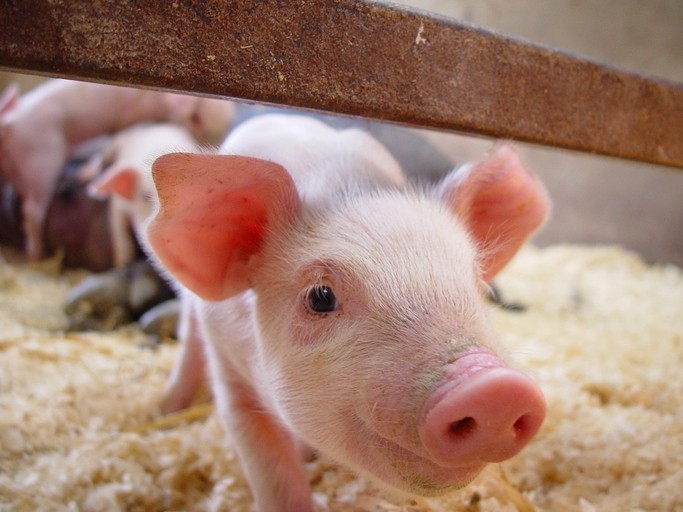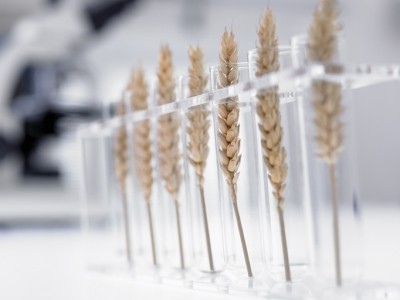Emerging mycotoxins can impact growth performance of pigs

Barbara Novak, scientist at DSM, working with researchers in Brazil and in INRA, France set about investigating the impact of the Fusarium-derived metabolites beauvericin, enniatin B and B1 (EB) alone and with DON in 28–29 days old weaning piglets over a time period of 14 days.
“The aim of this study was to investigate the short-term effects of the emerging mycotoxins BEA, ENN B and ENN B1 alone (EB), and together with the regulated mycotoxin DON (EB + DON) on the performance and feed consumption as well as on the intestine and liver of piglets.
“We chose 28–29 days old piglets for the study, as they are in a critical phase during the first weeks after weaning and thus, are more susceptible to mycotoxins and infectious diseases.
“Due to the known antibiotic properties of the used emerging mycotoxins, we further investigated their impact on the fecal microbiome by applying a shotgun metagenomics approach.”
The team also analyzed the effect of the mycotoxins on several clinical blood parameters, gene expression in liver and jejunum tissue, as well as histology of liver, intestine and lymph nodes.
Findings
The researchers, who published their findings in the journal, Food and Chemical Toxicology, saw that the co-application of EB and DON (EB + DON) led to a significant decrease in the weight gain of the animals.
Liver enzyme activities in plasma were significantly decreased at day 14 in piglets receiving the EB + DON-containing diet compared to piglets receiving the control diet.
All mycotoxin-contaminated diets led to moderate to severe histological lesions in the jejunum, the liver and lymph nodes, noted the researchers.
In addition, they reported that shotgun metagenomics revealed a significant effect of EB-application on the gut microbiota.
“Exposure to an EB-contaminated diet for 14 days significantly reduced the microbial diversity.”
The authors said their results provide insights into the harmful impact of emerging mycotoxins alone or with DON on the performance, gut health, and immunological parameters in pigs.
“Our study shows that the emerging mycotoxins alone, but also with the frequently co-occurring metabolite DON, impact the growth performance, lead to organ lesions and to an alteration of microbial community composition.
“Regarding the high prevalence and co-occurrence of EB with regulated mycotoxins in different feed commodities, more in vivo results must be generated also in other animal species to provide sufficient data for a reliable risk assessment.”
Regulatory gap
Secondary fungal metabolites - enniatins (ENNs) and beauvericin (BEA) - are produced by different fungal genera, but mainly by Fusarium species and are considered as emerging mycotoxins (Jestoi, 2008; Urbaniak et al., 2020), said the authors.
The European Food and Safety Agency (EFSA) published a scientific opinion on their risk as early as 2014, but no regulations or guidelines have been established to date (EFSA, 2014).
Novak said this was mainly a result of the lack of in vivo experiments and long-exposure studies in mammals. She also noted challenges around performing such in vivo trials such as the lack of naturally contaminated culture material and the cost involved in obtaining an affordable amount of those toxins.
“One mg of enniatin costs about €400 (US$409), but for a feeding trial you need at least 1 gram depending on the set-up, animal species, duration of the study, etc. We found a collaboration partner, who was able to get a Fusarium strain to produce only enniatin B, B1 and beauvericin, but no other mycotoxins. You could also extract the desired mycotoxin but it is very time-consuming and expensive as well,” she told FeedNavigator.
In terms of what regulatory bodies should be doing in respect of this emerging risk, Novak said: “Considering the many studies describing the detrimental effects of these mycotoxins, it would be helpful to establish at least guidelines for maximum total concentration for certain species, risk groups and/or infants. That might increase the awareness, the measurement of their occurrence and further in vivo experiments with these toxins and thus, more data can be gathered.”








